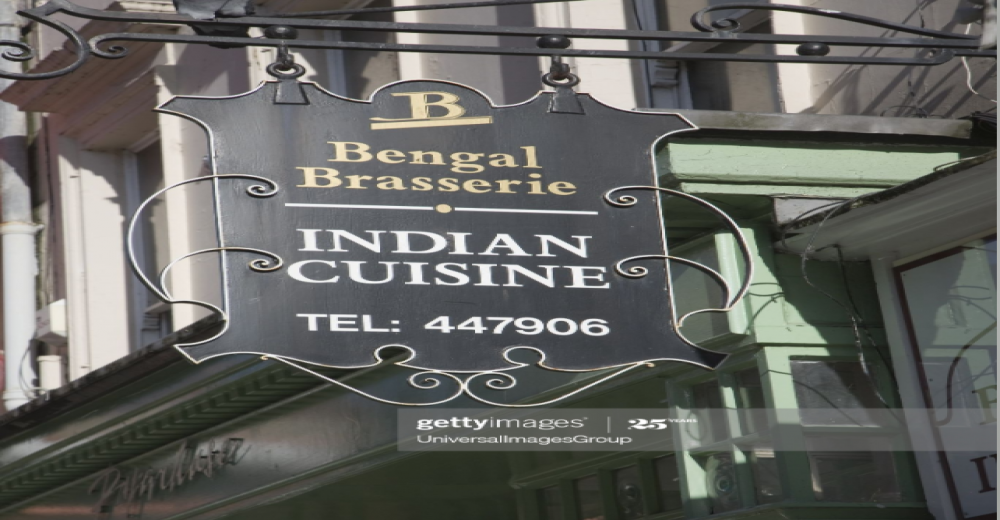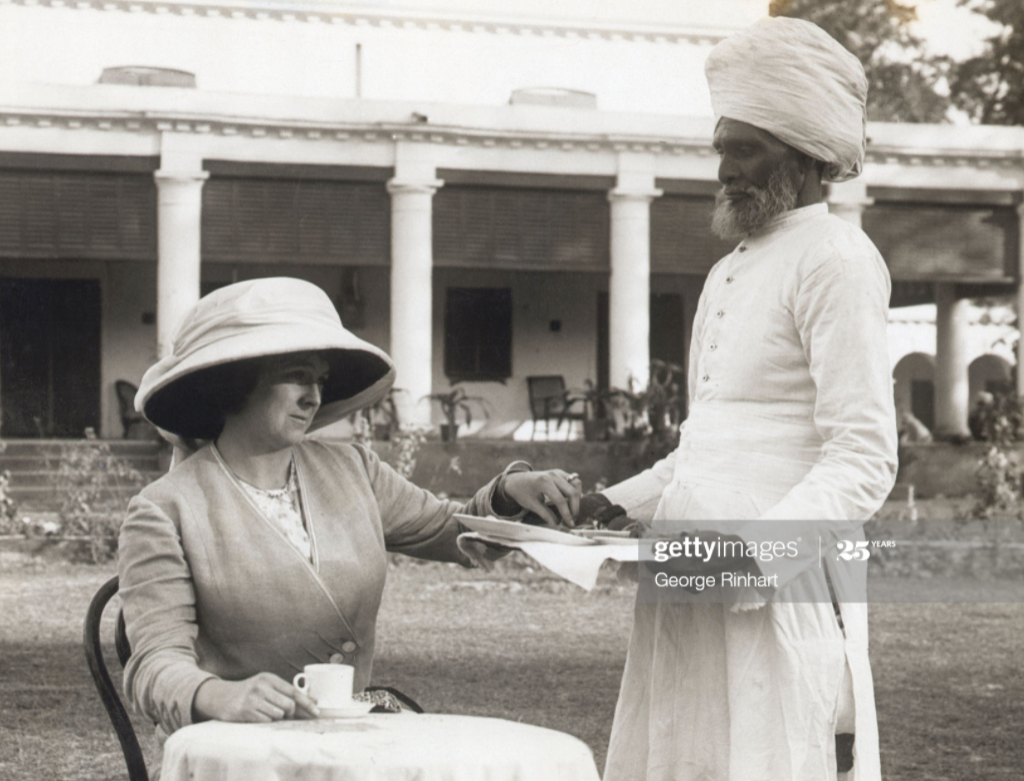By Srishti Khurana

What is on your plate is an intricate product of historical inventions, creativity and happenstance. Knowing how it came to be the way it is as much a lesson in history, as it is in gastronomy. The journey of food began with man’s journey and will end when we stop appreciating the very food on which we thrive. Indian cuisine is a mélange of cultures of an unwilling country and its oppressors, holding light to the fact that nothing can be kept too pure. The future holds change, for better or for worse.
Portuguese and French already had a presence in India even before the British came. The Portuguese had brought tomatoes, potatoes, chilies and bread to India. Chhena is used to make Bengali sweets, it is a cousin in the cheese family brought in by the Portuguese. The major difference between them and Anglo-Indian cuisine was that their influence was restricted geographically. The British Empire had its wings spread far and wide. It covered almost all of present-day India, Bangladesh and Pakistan. With every region having its own cuisine, the Anglo-Indian food varied with each region. It can be best described as a cuisine “tinged with Indian flavour”.
The Beginning
When British first came to India, they continued to eat what they used back in Britain. Their meals mainly consisted of: salted, smoked and boiled meat (beef, pork, mutton, chicken, and duck), mash, stew, bread, and pie, white soup and mostly pudding and custard for dessert. Later when the women came to India, they interacted with the cooks or the ‘khansamas’ in their households and added a touch of local flavor to their daily fare. The involvement of the cooks in the kitchens of the Britons living in India far exceeded their involvement in the Indian households themselves. This was essentially where it all started. Indian cuisine became very popular in England. Queen Victoria herself was considered to be a connoisseur of curry, Indian chefs were hired for her personal kitchen to cook curry for her every single day.
The Food

Exchange took place from both sides; European techniques and ingredients were incorporated into Indian fare. Indian names were anglicized while chutneys and curries became the talk of the town. Though Indian food was delicious but very hot for the British palette, thus Anglo-Indian food was modified in order to add more sweetness and tanginess. Chilli was kept to a minimum. A Mughal influence can also be felt, the tikkas and the kebab or kebob also became a part of the meals. The close ties of the British officials with the Nawabs exposed them to the sumptuous, rich and complex food of the Mughal Empire.
Chef Bridget White Kumar recalls,” Lunches on Saturdays and Sundays were special. Saturday lunch was invariably Mince Ball Curry, Coconut Rice and Devil Chutney”. Devil Chutney is fiery red chutney made of vinegar and sugar which react with the onion and red chilli to produce the bright red colour. Ball curry has mutton or beef meatballs in a tomato and coconut based gravy. Yellow rice or coconut rice is rice cooked in twice the amount of coconut milk with some aromatic whole spices, turmeric and butter. Other famous Anglo-Indian dishes are Mulligatawny soup, Dhall curry or Doll curry (anglicized name of Indian Dal), pepper water, Jhal Phrazi, Khichri, Roast mutton etc.
The Anglo-Indian community in the present time is highly scattered around the world. The cuisine survives on family recipes. When asked from a group of Anglo-Indians, each of them had a different idea about their cuisine. The dishes with the same name have a different flavour in different households. People had their own rendition of the local dishes. This does make us question if the Anglo-Indian food can even be called a cuisine, or is it just a British interpretation of the Indian cuisine?
In the records
Indian spices were constantly in demand during the colonial period and the English in Britain began to have access to Indian curry from late 19th century onwards. Hindostanee Coffee House is supposed to be the first Indian restaurant in Britain. It was opened in 1809 by Dean Mahomet, the son of a former sepoy of the East India Company who eventually settled in Britain according to his memoir, The Travels of Dean Mahomet. Veeraswamy, was opened in 1926 by the grandson of an English General and an Indian Princess and is the oldest restaurant still in business. Back in India the English wives and women were given the job to simplify and record the recipes of Indian dishes. This task was in no way easy. At the time the food of the local population was highly diverse. There were rice consumers and wheat consumers, people of different religions, vegetarians and meat eaters. Food of every region had different techniques, ingredients and flavour profiles. The book ‘Indian Cookery’ was published in 1861. Cookbooks tell unusual cultural tales, says Arjun Appadurai, a sociocultural anthropologist. They became the way India was assimilated into the empire. Recipes were formulated which had no significance in an Indian kitchen and thus, the authenticity of the cuisine was compromised.
The essence of a very complex cuisine was reduced to a few terms such as curry and masala. Texts published were full of such semantics, in an attempt to homogenise the diverse and varied Indian cuisine and culture and make it more accessible and palatable for the British. The food served in an Indian restaurant in Britain even today can hardly be
called Indian, it is majorly Bangladeshi-Mughlai food given exotic names to entice the customers. Chefs like Keith Floyd, Rick Stein have widely popularised the British idea of Indian cuisine.
Curry: Indian or not?
‘Curry’ became associated with all Indian food for the world because of the British. The Germans put it in their sausage and called it ‘curry wurst’. “I’m going out for curry” is Birmingham speak for I’m going out to eat Indian food. There is an area called ‘Curry hill’ in Manhattan which has an array of restaurants serving Indian delicacies. The word curry itself is believed to come from ‘kari’ meaning a kind of gravy in Tamil which was applied by the Portuguese to a number of Indian dishes. Later, the British anglacised the term into “curry” when they colonised the subcontinent. That spelling comes from the French word “cuire”, which means ‘to cook’, says Kantha Shelke, a food scientist and principal at the science and research firm Corvus Blue. According to BBC Food, ‘Curry powder’ is a mixture of turmeric, chilli powder, ground coriander, ground cumin, ground ginger and pepper, and can be bought in mild, medium or hot strengths. It is a completely British invention and isn’t an ingredient found in a traditional Indian kitchen. According to Indian-American cookbook author Anupy Singla, “In the South Asian mind, curry refers less to spice and more to the consistency of a dish. We rarely-if ever-cook with spice blend known as curry. To us curry means ‘gravy’.” Indian or not, curry has influenced the world from the Japanese curry to the South African “Bunny Chow”.
The Legacy
Food is what connects an individual to the past, their roots and help us make sense of the world that we live in. By recreating the dishes from our culinary heritage, we can share a part of our ancestors’ lives, lives which were very different from ours yet shaped the present. For a community as small as the Anglo-Indian community preserving their culinary heritage is a way to hold on to their roots. However, the younger generation of Anglo-Indians is not interested in learning to cook. Women are no longer expected to be the sole cooking member of the family. The community leaders feel only their offsprings can recreate and take their culinary heritage forward. Famous Anglo-Indian chef and author Bridget White Kumar fears, “a loss of cuisine”. All India Anglo-Indian association which was formed in 1876 in efforts to preserve the cuisine and has curated a list of popular recipes derived from the conjoining cultures in their food section. Anglo-Indian cuisine is reminiscent of an era gone by.

